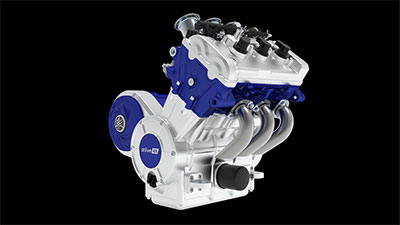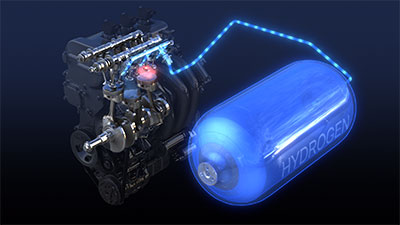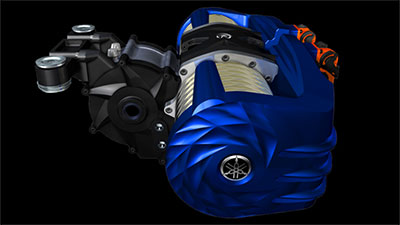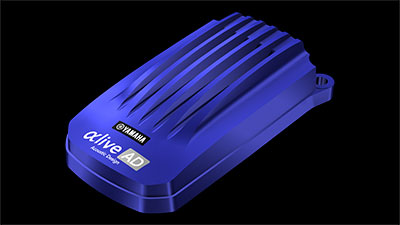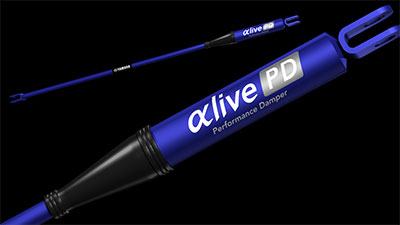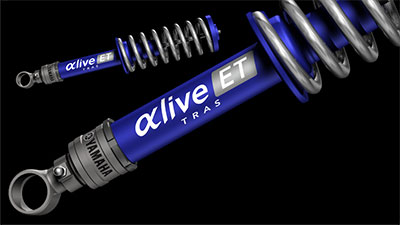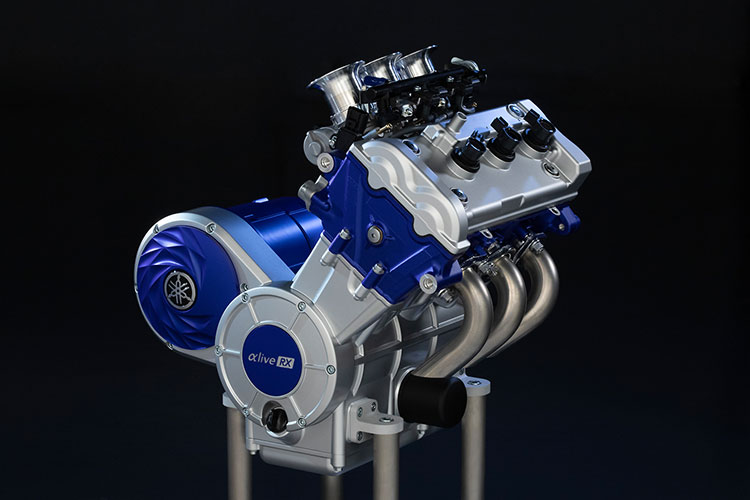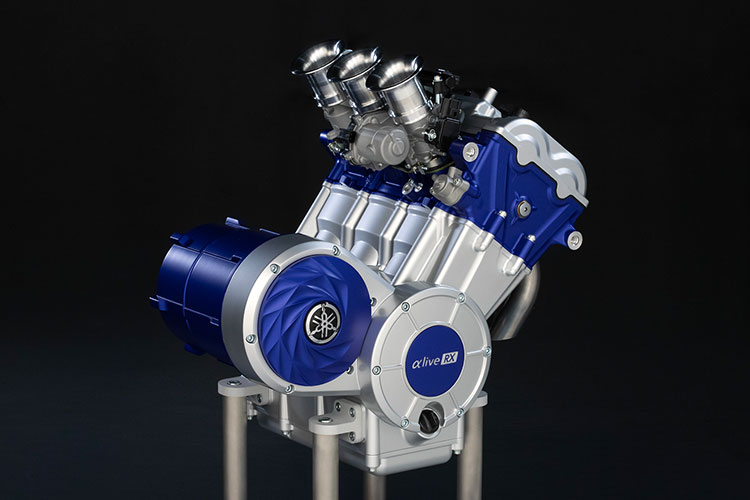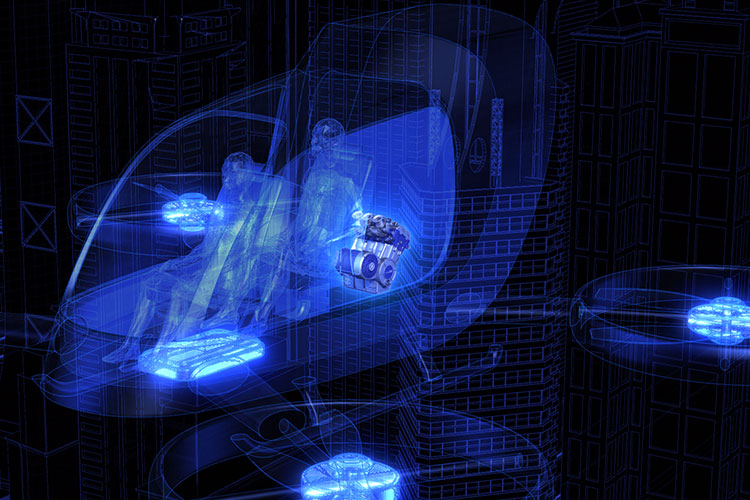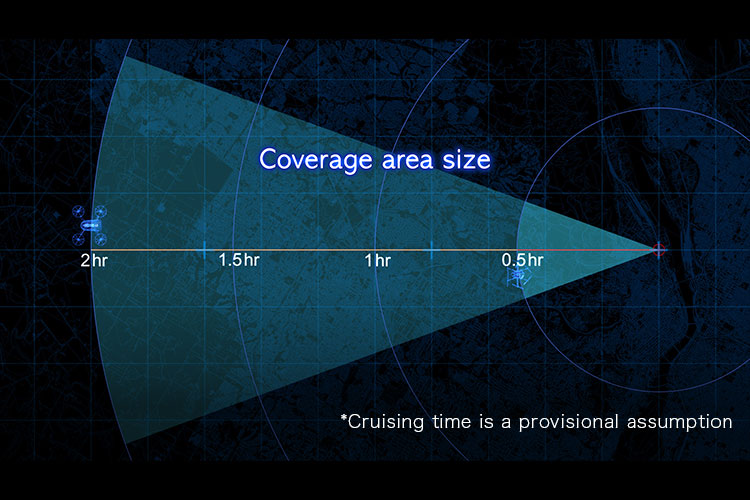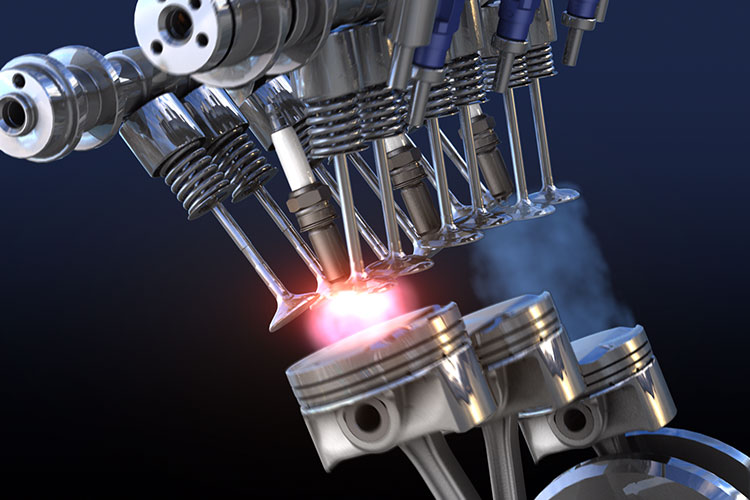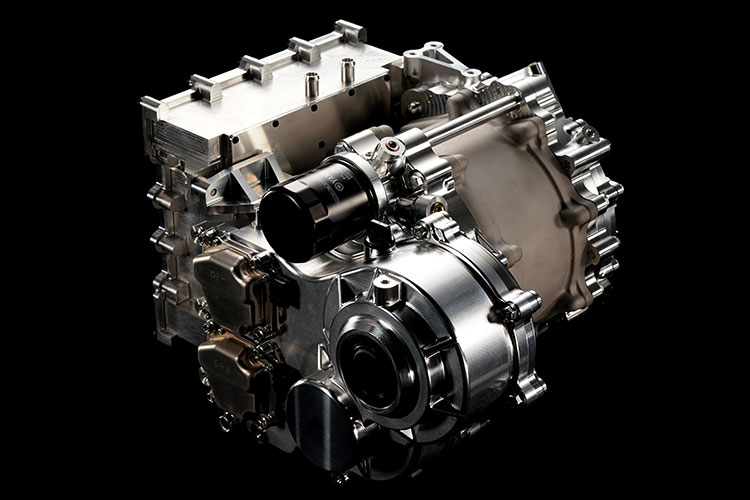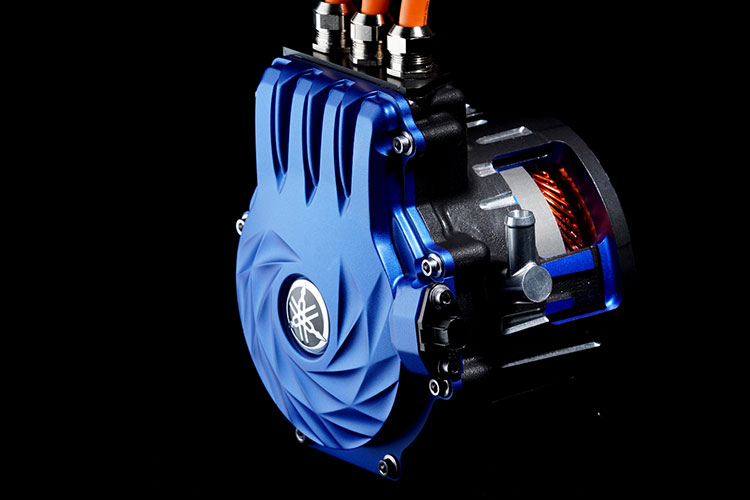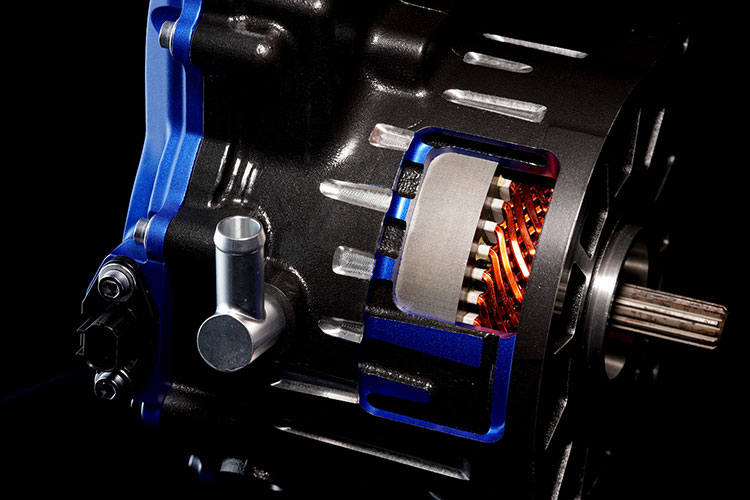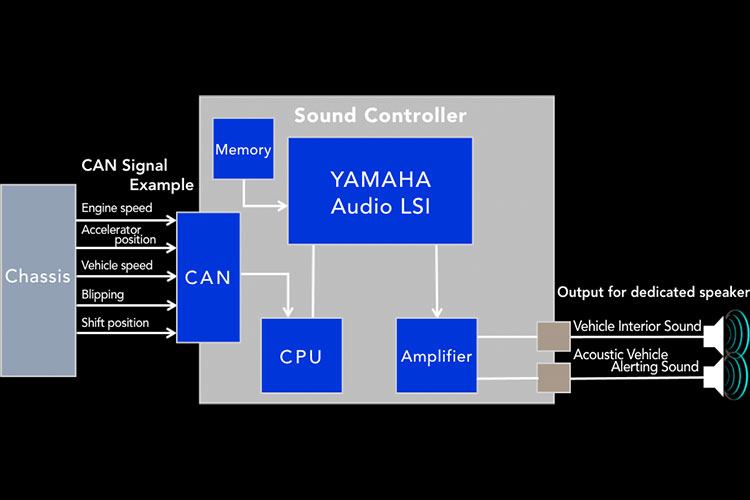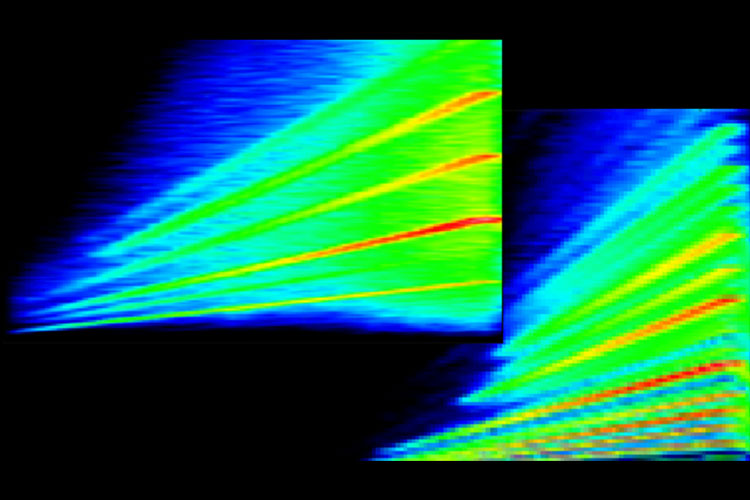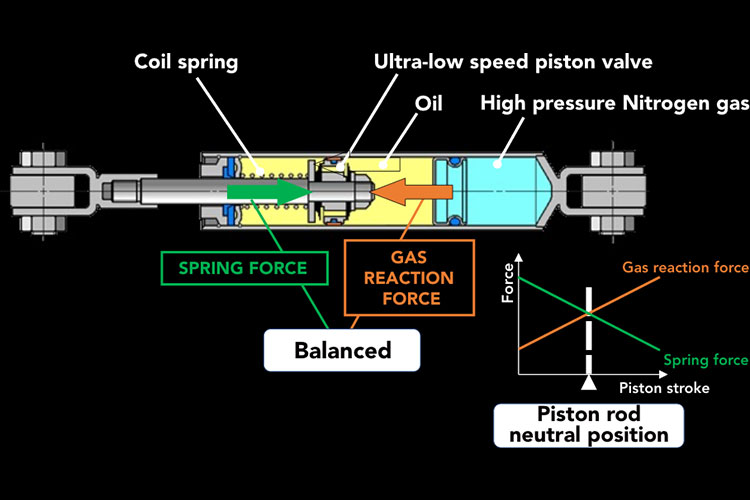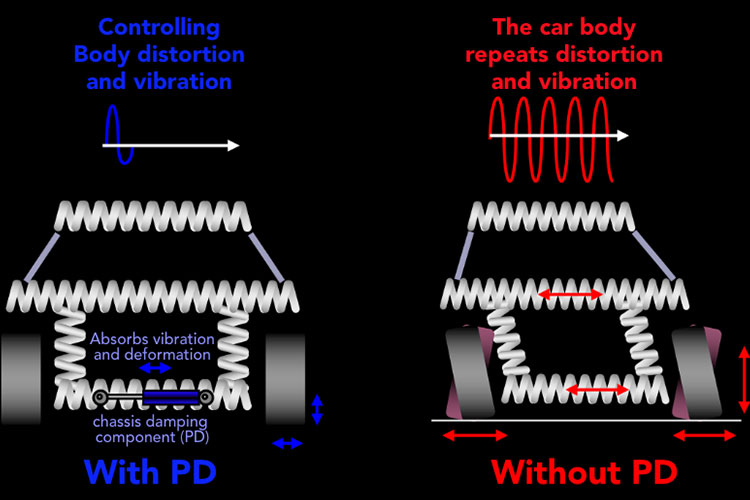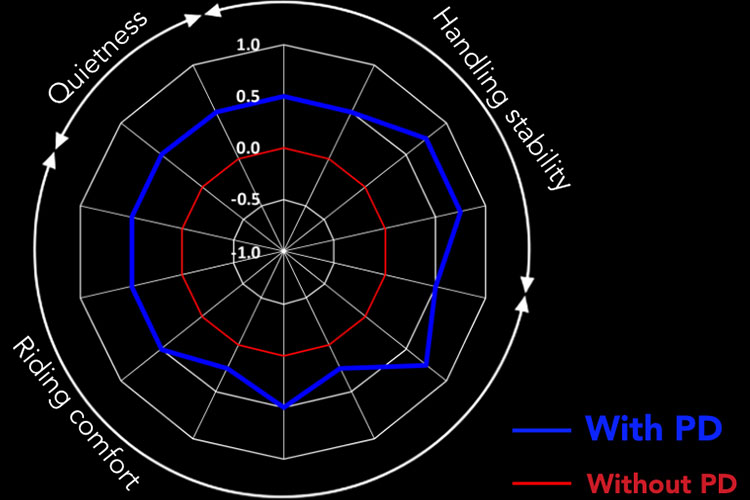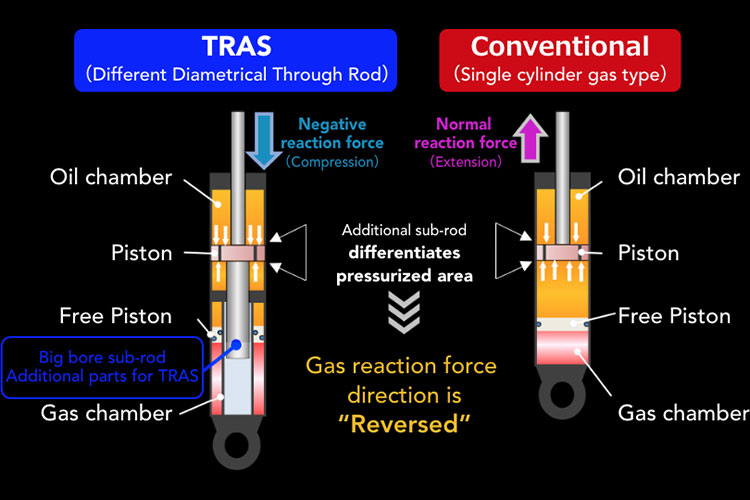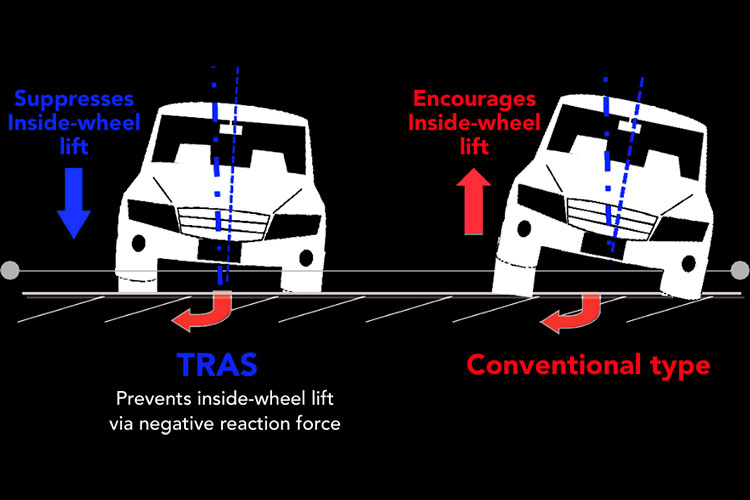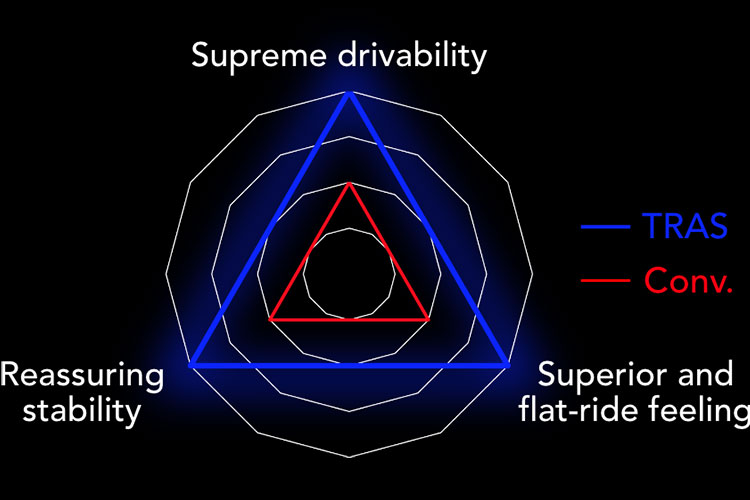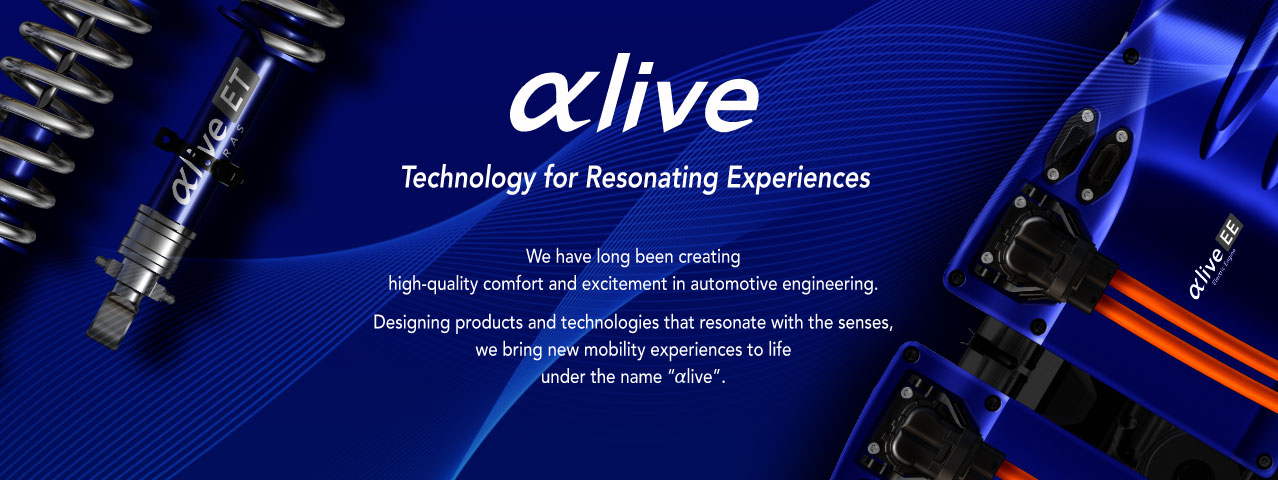

αlive RX(Range Extenders)
This concept model for a high-performance range extender unit combines the technology we have garnered to date for creating compact, lightweight, and powerful engines together with the electric motor technology we have developed in-house. Utilizing it will further expand the range of applicability for using electric power with mobility products.
This unit was designed anticipating use in mobility applications requiring compactness, light weight, and high power, and correspondingly delivers high performance with its approx. 88 kW* in maximum output. By replacing some of the batteries in an electric vehicle with this unit, it can substantially extend the vehicle’s maximum cruising range.
Furthermore, while the range extender does rely on conventional gasoline engine technologies, it is also compatible with next-generation fuels and actively incorporates technologies aimed at achieving a carbon-neutral society, thereby growing the possible scenarios for using electric mobility.
*All figures are based on present-day assumptions.
αlive H2E(Hydrogen Engines)
The αlive H2E is an internal combustion engine employing existing engine technologies to combust hydrogen to produce energy while emitting no CO2.*1
From a well-to-wheels*2 standpoint, hydrogen is drawing attention as one energy source that may hold the key to a carbon-free era, and R&D and real-world testing in numerous fields and industries is underway.
Outside of use in mobility powertrains, hydrogen engines house high potential for use with generators and other products using internal combustion engines, making such technology a viable means to provide more paths to achieving carbon neutrality.
With hydrogen gaining newfound global attention as an energy source and the development of related technologies and requisite infrastructure showing progress, Yamaha Motor has set its sights on the potential within this technology and is proceeding with its own R&D efforts.
*1 Does not include the ultratrace amounts of engine oil burned during combustion.
*2 An indicator of total CO2 emissions generated from extracting and refining fuel resources through to use on the road.
αlive EE(Electric Engines)
By employing segment conductors for the coils to successfully raise the fill factor, our electric motors developed for mobility applications not only feature both high output and high efficiency, but are also lightweight—the 50 kW unit weighs just 13 kg. Further, by leveraging the casting technology and heat management expertise garnered from developing internal combustion engines, all our units achieve excellent cooling performance.
Our latest electric motor reaches the 350 kW class in maximum output and was engineered envisioning use in high-power mobility applications. Its compact construction treats the mechanical and electrical components as a single entity and integrates the gear and inverter into one unit. The motor is operable at voltages up to 800V and was developed in anticipation of four units used together or other multi-unit variations. It employs oil cooling to consistently deliver such high power and the design was thoroughly refined with both simulations and bench testing. In a quad-motor configuration, a total output of up to 1.47 MW (approx. 2,000 hp) is possible.
αlive AD (Acoustic Design)
The αlive AD (acoustic design) device uses a control unit with a built-in dedicated LSI audio processor to tweak and tune the electric motor’s sound, providing an exciting aural experience for the vehicle cabin via specialized speakers.
This Yamaha-proprietary dedicated sound source—created by leveraging our engine development know-how—can faithfully replicate the rumble of a gas-powered engine or the unique high-frequency whine of an EV. Together with the interior’s acoustic design technology, the αlive AD produces true-to-life sound to accompany the drive.
Yamaha Motor seeks to craft dynamic and inspiring Electric Engine sounds that convey a natural build-up and stir the emotions of the driver, not just by tuning out on the track, but across all kinds of driving scenes.
AD sound sample
Engine Sound Sample
EV Sound Sample
αlive PD (Performance Damper)
The Yamaha Performance Damper was born from a eureka moment during track testing. Instead of simply stiffening the chassis, adding a viscous damping mechanism to the body improves handling stability and comfort at the same time.
When driving, a car’s chassis is constantly subjected to minute, sub-1 mm body deformations. As the chassis is an assembly of multiple spring and elastic parts and components, there is little damping force at work and these deforming forces accumulate mostly unchecked, causing a repeating cycle of deformations at its natural frequency. To counteract this, the Performance Damper introduces a damping element to the chassis, absorbing deformation forces and inhibiting the effect of excessive deformation speeds on the vehicle body.
This not only enhances handling stability and comfort at everyday speeds, but also delivers both excellent driving performance and stability at high speeds.
αlive ET (TRAS)
αlive ET (TRAS) is a shock absorber unit under development and aims to provide drivers with confidence-inspiring handling stability and a comfortable ride without forceful steering inputs.
Over our long years of shock absorber development, we trained our focus on the effects a pushing force from a high-pressure hydraulic cylinder has on a car. Taking the opposite approach applied with our previous products sparked the idea of applying a pulling force instead. To produce this force, we devised a unique design with differing through-rod diameters by adding a large-diameter sub-rod. This is aimed at 1) creating a sense of stability borne from solid road traction, 2) improving the feeling of grip with the road using the inside wheels, and 3) producing a smooth and comfortable ride, and development continues with an eye on offering performance that stirs the driver’s senses.
Top
